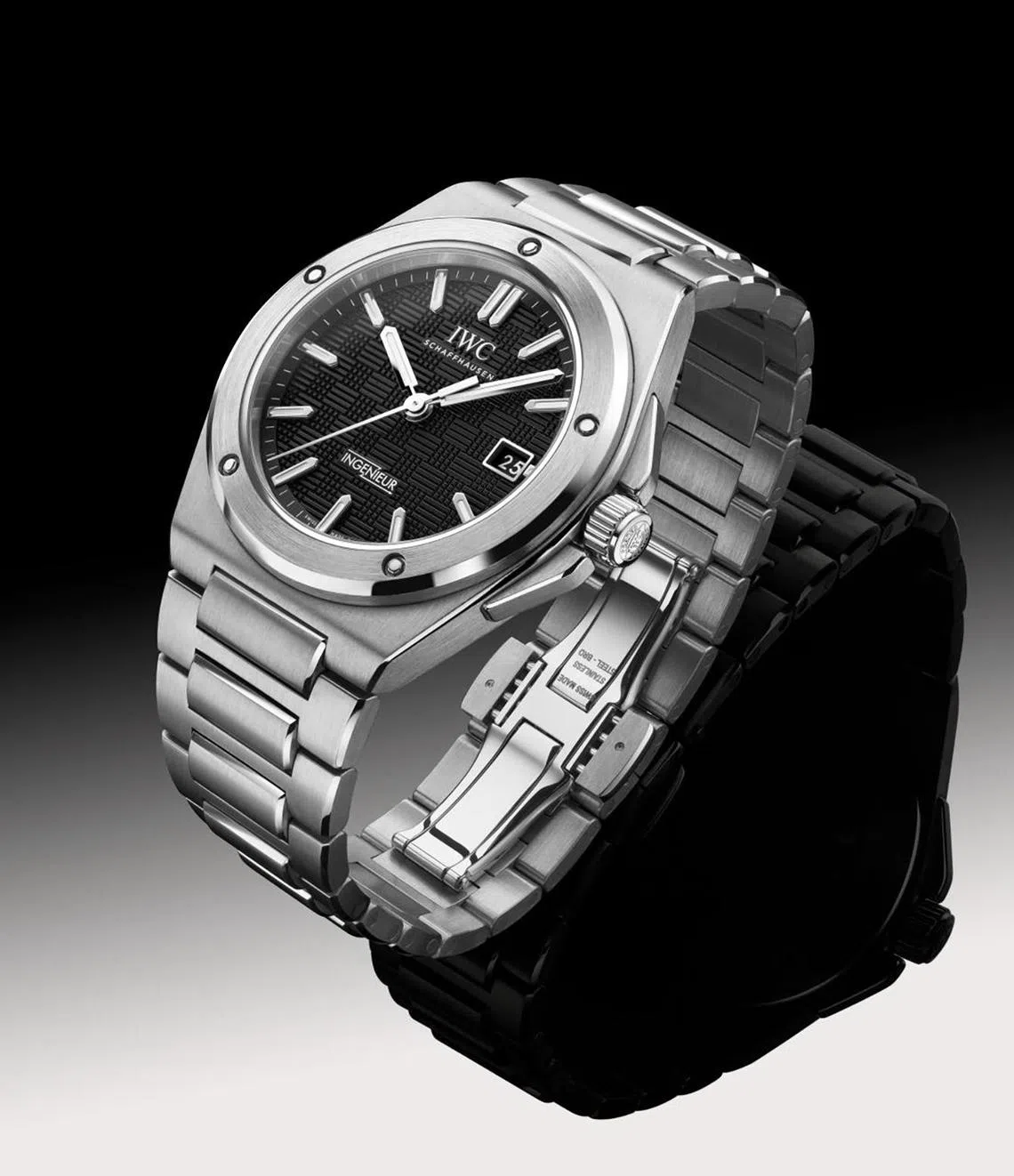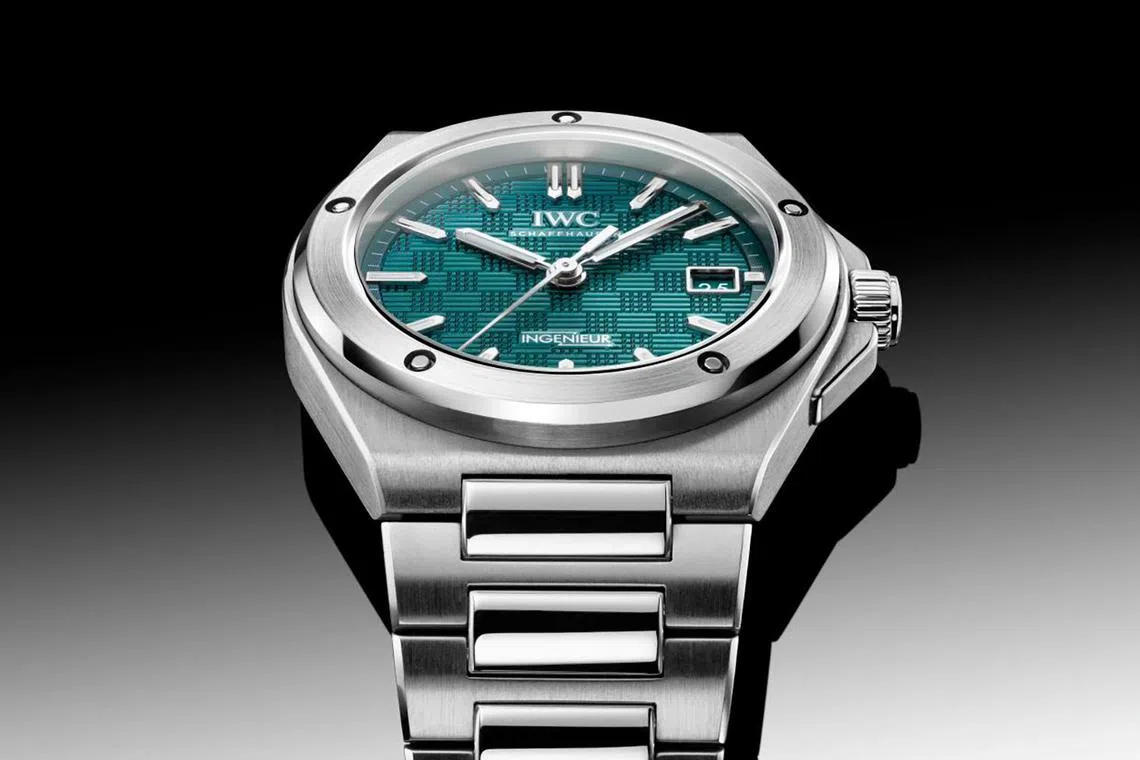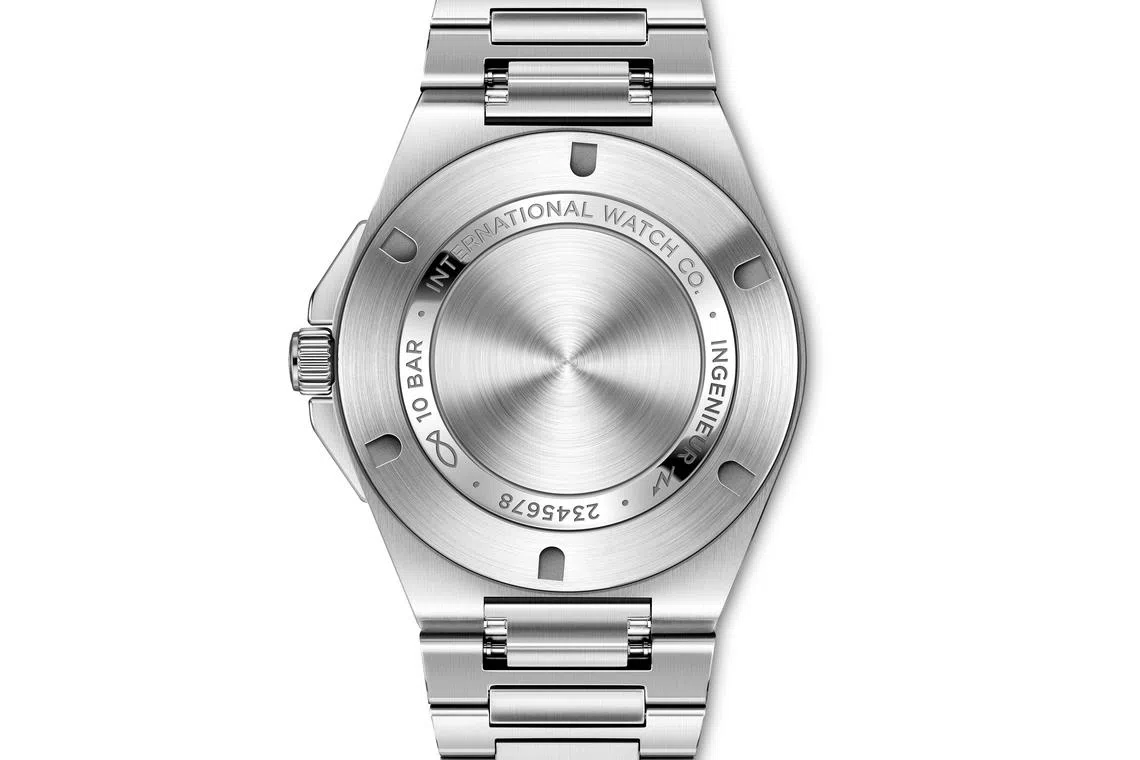IWC goes sporty modern
The Swiss brand has taken an iconic model and created a new and contemporary interpretation of a luxury sports watch
AS FORMAL DRESSING TAKES A back seat in favour of casual street wear – even at work – the luxury sports watch is also making a major comeback as the accessory to match.
On its part, IWC Schaffhausen has dusted off an earlier model from its Ingenieur collection and given it a new shine. The result is the new Ingenieur Automatic 40, which IWC’s chief executive Chris Grainger-Herr calls “a very versatile luxury sports watch for the 21st century”.
Ahead of its time
As it is, the stainless steel watch on which it’s modelled – the IWC Ingenieur SL ‘Jumbo’ Reference 1832 from the 1970s – “was unquestionably ahead of its time”, says the brand’s veteran sales and marketing director Hannes Pantli, who witnessed its unveiling at the 1976 Basel Watch Fair. “From a design point of view, the Ingenieur SL was a totally new departure,” he adds.
The watch, with matching integrated steel bracelet, was designed by the man who gave the watch world the Royal Oak and Nautilus – the late Gerald Genta, who single-handedly created the luxury sports watch category that saw steel watches sold at high prices for the first time. The appeal of his creations, which were shaped by the increasingly fluid boundaries between work, play and sport, ushered in a new era of watch design.

Among his most important works in the 1970s, the Ingenieur SL had all the hallmarks of Genta’s design: bold aesthetic cues and unique character crowned by a screw-on bezel with five recesses, a checkerboard-pattern dial and an integrated bracelet with H-links. “These gave the watch its distinctive character and made it instantly recognisable,” says IWC’s chief design officer Christian Knoop. “Thanks to Gerald Genta’s inspired contribution, the watch finally had a face.”
The Ingenieur embodies IWC’s engineering spirit and uncompromising technical and design-slanted approach to watchmaking. The first Ingenieur watch launched in 1955 was a technical milestone. The watch, Reference 666, was powered by the first automatic mechanism built in-house, with a highly efficient winding system developed by IWC’s then technical director Albert Pellaton.
Made for professionals – engineers, scientists and doctors – whose work exposed them to strong magnetic fields, Ref 666 was IWC’s first anti-magnetic wristwatch for civilian use. A soft iron inner case protected the watch’s movement against the effects of magnetic fields, which could undermine its accuracy.
Inspired, innovative improvements
Yet IWC wasn’t happy with it. The “modest round case” didn’t sufficiently reflect the watch’s technical character, its watchmakers thought. So Gerald Genta was roped in to design a new case.
The Ingenieur SL was a conversation piece when it was rolled out, but it wasn’t a commercial hit. Little more than 1000 pieces of the watch were sold between 1976 and 1983. Collectors only discovered it in the 1990s, after production had ceased. IWC says it’s now “one of the most sought-after watches from IWC’s history”.
At 40 millimetres, the Ingenieur SL was too bulky for the wrist in its time – hence the nickname ‘Jumbo’. Today, it’s perfectly sized for most people, especially affluent Asians who make up the biggest and fastest growing market for luxury timepieces. Which, perhaps, is why the new Ingenieur Automatic 40 is kept at 40mm.
Still, it isn’t an exact copy of the original. “While taking inspiration from Gerald Genta’s Ingenieur SL, we invested a lot of time and effort into engineering a new automatic model,” says Grainger-Herr. His chief designer Knoop adds: “The new Ingenieur has an astonishingly high level of detail and outstanding quality in processing and finishing – evidenced, among other things, by the combination of polished and satin-finished surfaces (on the case, bezel and bracelet).”
Even the 40mm case was reworked to ensure it’s perfectly proportioned to fit snugly even on a slim wrist. Subtle changes on the bracelet – replacing the nose-shaped horns of the earlier Ingenieur with a newly engineered middle-link attachment – also make the new watch more comfortable to wear.

The integration of an elaborately finished folding clasp highlights the beauty and slimness of the H-link bracelet, while a newly designed crown protector underscores the sporty character of the Ingenieur Automatic 40.
A more striking change made was on the bezel. In the case of the Ingenieur SL, five recesses tightened the bezel onto the case ring with the recesses positioned differently on each watch. On the Ingenieur Automatic 40, the bezel is secured to the case by five polygonal screws. The screws now have a technical function so they are always in the same position.
The dial was also altered, though it stays largely similar to the original. It has a distinctive ‘Grid’ structure with a pattern of lines offset by 90 degrees to each other. This covers the entire inner area of the dial, while the outer area around the chapter ring remains smooth. Before it is galvanised, the dial is stamped into the soft-iron blank.
“We also painstakingly balanced the proportions of the IWC logo and its position on the dial and alignment with the Grid down to thousandths of a millimetre,” Knoop says. His design team further ensured the appliqués are luminescent to be legible even at night.
The new watch got a new movement. Boasting state-of-the-art technology, the IWC-manufactured 32111 calibre is fitted with a further-improved pawl winding system, the highly efficient system first built in the 1950s. This automatic movement has a power reserve of 120 hours, twice the standard number of hours of most timepieces. And as with all Ingenieur models, a soft-iron inner case shields the movement from the effect of magnetic fields.
The Ingenieur Automatic 40 is water-resistant to 100 metres, making it a modern and fully versatile sports watch that’s suitable for work and play.
Perfectionism is its DNA
Knoop says it did cross his team’s mind to simply re-issue the original Ingenieur SL, but the idea was quickly dropped. “Merely re-issuing a historical design does not fit in with our aspirations for the Ingenieur collection. As engineers and designers, continuously improving and perfecting something that already exists is our DNA.”
They were encouraged by Evelyne Genta, Gerald Genta’s wife and long-time business partner. She says her husband would have done likewise.

The task of re-working the Ingenieur SL wasn’t taken lightly. “It is not every day that a designer gets the chance to work on an icon,” Knoop recalls. “We were aware of the enormous responsibility this task has entailed and proceeded very cautiously. Nevertheless, we believe we succeeded in creating a new and contemporary interpretation, perfected down to the smallest detail.”
Evelyne Genta agrees: “I think it’s very faithful to Gerald’s design – I am sure my husband would have liked it.”
The stainless steel model of the Ingenieur Automatic 40 comes in three variations – in a black, silver plated and aqua (blue-green) dial but all with rhodium-plated hands and appliqués encased in steel, paired with an integrated steel bracelet with butterfly folding clasp.
As IWC is the pioneer in the use of titanium in watchmaking, it’s no surprise there’s also a version in this material – one that features a grade 5 titanium case with black hands and appliqués. The integrated bracelet with butterfly folding clasp is also made of titanium. Titanium is about a third lighter than steel. Robust and rugged, it’s also skin-friendly and hypoallergenic.
Price: S$17,300 (stainless steel), S$21,700 (titanium).
Decoding Asia newsletter: your guide to navigating Asia in a new global order. Sign up here to get Decoding Asia newsletter. Delivered to your inbox. Free.
Copyright SPH Media. All rights reserved.

